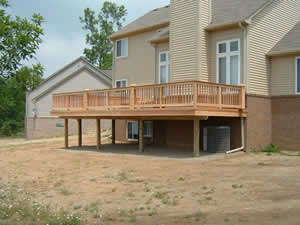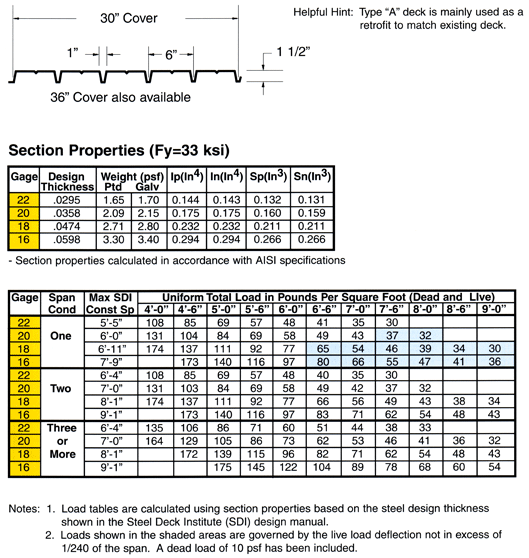Multiply the length of the roof in feet by the width of the roof in feet to find the area of the roof in square feet.
Formula for determining deck load with a roof over.
To find the amount of plywood needed to cover a roof start by finding the area of the roof.
To determine the load of a deck pier you must take half the length of the joist span multiplied he length of the beam span measured from pier to pier.
Once the area is known divide by the area of a 4 8 sheet to find how much sheathing is needed.
This number is then multiplied by 50 which is the 40 psf live load 10 psf dead load mentioned earlier.
Deck beams and joists go hand in hand as the framing materials for your deck.
If you are planning on building a raised deck as shown in figure 1 it is important to determine the quantity positioning and size of the deck support columns that will support the load of the deck the dead load and the load which is created by the things that will go on the deck including you and your guests which is the live load.
This calculator determines the size of each tributary area of your deck.
From here you should be able to determine your deck surface area length x width.
This is the amount of weight that must be supported by the pier.
Default is 50 psf which you can change.
Then use a long tape measure to determine the total length and width of your deck enter into calculator.
For ground snow loads greater than 20 pounds per square foot the roof load is equal to.
It then determines the total load from each tributary area based on the design load of your deck.
If you drove a dump truck over it yes this would throw all our calculations out the window.
To determine the maximum load capacity of your deck start by calculating its total area and multiply by 50 psf.
This is all of the natural stresses imposed upon a roof such as snow loads rain loads and wind loads.
For roofs that are flat and with ground snow loads lower than 20 pounds per square foot the roof snow load is equal to 70 of the product of the exposure thermal and importance factors and the ground snow load.
Don t get confused with what weight you might think or want to load the deck with.
The process involves one simple equation and some knowledge of the loads that the beam will carry.
For a porch roof the beam needs to be sized according to the maximum snow loads in your area and you must know enough about the porch design to determine how the load will be distributed and over what distance the beam will carry the load.
The total load for each tributary area is then divided by the area of each footing in order to determine the load psf imposed on the soil.
So a 100 sqft deck would be designed to support 5000 lbs.
Determine the transient load of the roof.
Lay out your deck with stakes at each corner and string in between.
This is highly regional as weights of snow for example range from 10 to 300 pounds per square foot based on moisture and volume of the snow.
Find the area of a roof.
Your beams will need to bear the load of not only your decking materials but additional components of the frame itself.
Step 4 determine the flat roof snow load.



























